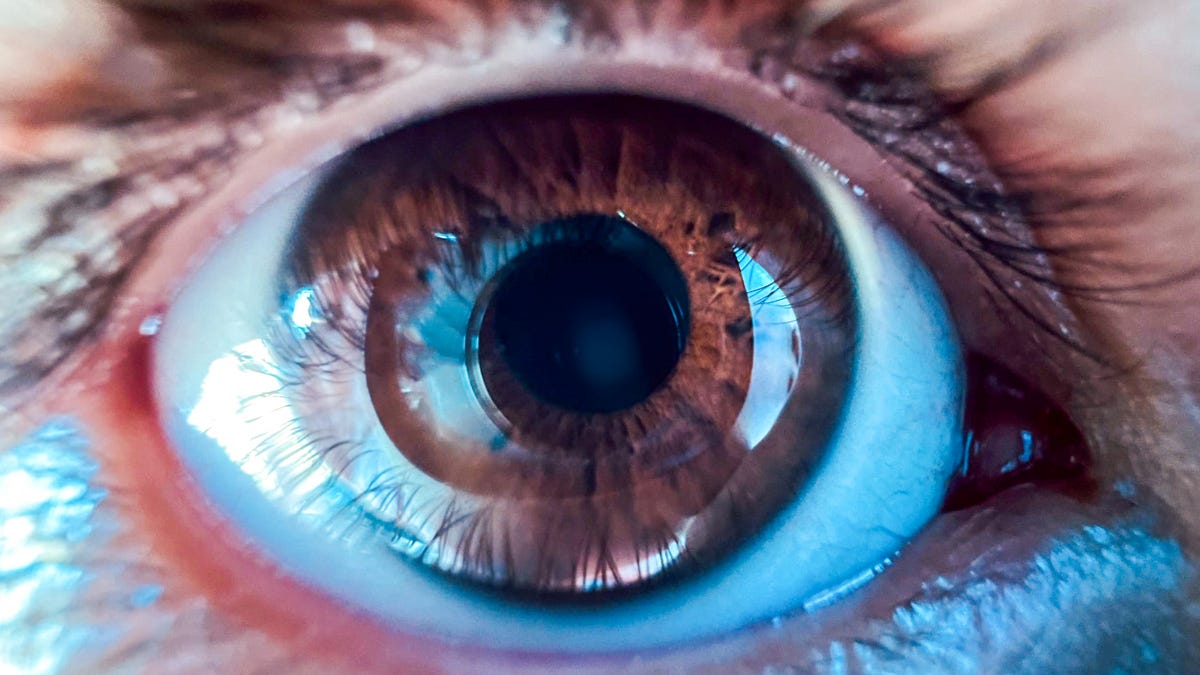Sleeping in Contact Lenses While Traveling Is a No-No. Do This Instead
You already know you shouldn't sleep in your contacts, so follow these steps to prevent blurry vision from cloudy lenses.

You should remove your contacts before you sleep.
Sleeping while wearing contact lenses is a known no-no (unless your eye doctor prescribes a type of lens designed to be slept in). I've done it way more often than I should, and I wake up with blurry vision and dry, sticky lenses that won't budge. (Don't tell my eye doctor. I know sleeping with your contact lenses in puts you at a much higher risk of an eye infection.) This is especially a problem on trips when I don't feel like removing my contacts on a plane or in the car. That is, until my colleague told me about this important time-saver for removing contacts safely and easily.
It's a simple solution, and I even tried it at home to remedy not wanting to get out of bed to remove and clean my contacts. It involves the same amount of work you'd normally do, but you do it in advance. When you're traveling, it'll help you avoid the hassle of digging through your luggage and will make taking your contacts out more convenient. Note that this method is for reusable contacts and not daily disposable lenses. Check it out below.
Read more: 6 Best Places to Buy Contact Lenses Online (and Save Money)
Grab these 4 items before traveling with your contact lens
If you wear contacts, you already know you need your contact lens case and solution.
You want to wash and dry your hands before you start. If you are desperate, you can bring a bottle of hand sanitizer so you can clean your hands before pinching the contacts out of your eyes, especially since you'll be touching surfaces on the plane or while stopping for a snack or gas on the road. Even after the sanitizer has dried, however, you still may have some residual alcohol on your fingers, so if you have the option to wash your hands with soap and water too, I recommend doing that.
And bring an extra pair of glasses to wear on the plane or during your trip. "Airplanes have quite dry air and even the most comfortable of contact lenses can become dry and irritating, especially on those long-haul flights," Dr. Mika Moy, a clinical professor at the Herbert Wertheim School of Optometry and Vision Science at the University of California, Berkeley, told me. Instead, she said, "wear glasses on airplanes for better comfort and so you don't have to worry about napping with your lenses on."
You can put your contacts back in when you've arrived.
Grab some contact cases, hand sanitizer and contact solution.
Here's what to do
Right before leaving for your trip, prep your contact lens case by cleaning it out. Then fill each side about halfway with contact solution -- or the amount you normally use to fill your case up. Close the lids tight to avoid any solution from leaking out, and store the case in a Ziploc bag inside a backpack or purse, where you'll have easy access. You can fill multiple contact cases so that you'll have a backup if anything goes wrong, and it means you won't have to pack a huge bottle of contact solution.
Then, when it's time to remove your contact lenses from your eyes, just grab your case and place your contacts inside. You'll want to first make sure your hands are as clean as possible.
This simple solution is clever because it saves time and will keep your eyes feeling fresh.
Read more: Yes, You Can Save Money on Travel Despite Inflation
What we don't recommend doing with your contact lenses
When it's time to remove your contacts, be careful. After all, you only have one set of eyes. Here's what I recommend.
Don't: Remove your contact lenses during turbulence on the airplane. Contact lens solution may spill, your contact could go flying and you might jab yourself in the pupil.
Do this instead: Wait until the plane is steady to avoid poking your eye. Or better, instead of wearing contacts, wear your glasses during the flight to avoid your contacts drying out.
Also, don't do this: Take out your contact lenses while driving or if the road is bumpy.
Do this instead: Wait until you make a stop at a gas station to wash your hands and remove your contacts.
Don't do this: Only bring one pair of contact lenses with you. Anything can happen when removing your contacts, including if a lens rips or falls onto the floor (ew).
Do this instead: Always bring an extra pair or two with you as backup. Or consider bringing one-day disposable lenses instead. "If you wear one-day disposable contact lenses when traveling, you can avoid needing solutions or cases at all," Moy said. "One-day lenses are typically more comfortable and healthier for the eyes because they are only used once and do not need to be disinfected at all."
Don't do this: Put contacts in when you have red eyes.
Do this instead: Always bring an extra pair of glasses in case you develop an eye infection while traveling.
Don't do this: Sleep in your contacts. Eye doctors will tell you it can cause an infection and even result in permanent vision loss. (I admit, I need to take this advice.)
Do this instead: Place the case filled with solution next to your bed so you can easily remove your contacts without getting up -- whether you're traveling or at home tucked into bed.
For more life tips, here's how to make distilled water for free, how to cut cake like a pro with floss and how to end junk mail for good.

